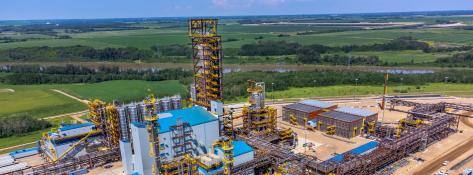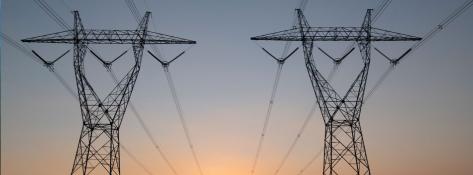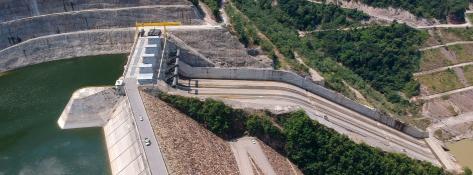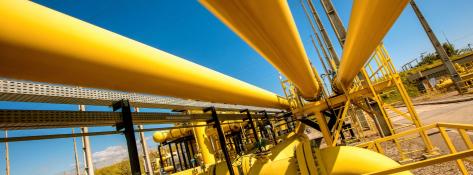Market
Memos from Howard Marks: Cockroaches in the Coal MineIt’s Time to Consider Investing in Infrastructure
The Potential Benefits of Investing in Private Infrastructure
Enhanced Risk/Return
Adding private infrastructure to a portfolio has historically increased overall return while decreasing risk.
Risk/Return
Past performance is not indicative of future results. For the period January 1, 2010 through December 31, 2024. Source: Bloomberg; Preqin. Equities refers to MSCI World Index; Fixed Income refers to the Bloomberg Global Aggregate Index; Private Infrastructure refers to the Preqin Infrastructure Index. See disclosures for full index definitions. The indexes are unmanaged and cannot be purchased directly by investors. Index performance is shown for illustrative purposes only and does not predict or depict the performance of any investment. There may be limitations to the data provided given limited coverage, reporting lag and different valuation methodologies. Further, private infrastructure funds that are included in the index choose to self-report. Thus, the index is not representative of the entire private infrastructure universe and may be skewed towards those funds that generally have higher performance. Over time, funds included and excluded based on performance, may result a “survivorship bias” that can result in a further misrepresentation of performance. Risk is defined as annualized standard deviation. Please see disclosures for additional information.
A Hedge Against Inflation
Infrastructure has proved to be an effective inflation hedge.
Average Quarterly Returns During Periods of Above-Average Inflation
Past performance is not indicative of future results. For the period January 1, 2010 through December 31, 2024. Source: Bloomberg; Preqin. Equities refers to MSCI World Index; Fixed Income refers to the Bloomberg Global Aggregate Index; Private Infrastructure refers to the Preqin Private Infrastructure Index. The indexes are unmanaged and cannot be purchased directly by investors. Index performance is shown for illustrative purposes only and does not predict or depict the performance of any investment. There may be limitations to the data provided given limited coverage, reporting lag and different valuation methodologies. Further, private infrastructure funds that are included in the index choose to self-report. Thus, the index is not representative of the entire private infrastructure universe and may be skewed towards those funds that generally have higher performance. Over time, funds included and excluded based on performance, may result a “survivorship bias” that can result in a further misrepresentation of performance. Inflation is defined as Seasonally Adjusted Core CPI. Periods of Above-Average Inflation are defined as quarters where Core CPI was above its historical average. During the time period analyzed, average Core CPI was 2.21% and there were 15 such quarters. Please see disclosures for additional information.
Mitigation of Downside Risk
Infrastructure has historically performed well during times of market uncertainty.
Average Quarterly Returns During 10 Worst Quarters for Equity Markets
Past performance is not indicative of future results. For the period January 1, 2010 through December 31, 2024. Source: Bloomberg; Preqin. Equities refers to MSCI World Index; Fixed Income refers to the Bloomberg Global Aggregate Index; Private Infrastructure refers to the Preqin Private Infrastructure Index. See disclosures for full index definitions. The indexes are unmanaged and cannot be purchased directly by investors. Index performance is shown for illustrative purposes only and does not predict or depict the performance of any investment. There may be limitations to the data provided given limited coverage, reporting lag and different valuation methodologies. Further, private infrastructure funds that are included in the index choose to self-report. Thus, the index is not representative of the entire private infrastructure universe and may be skewed towards those funds that generally have higher performance. Over time, funds included and excluded based on performance, may result a “survivorship bias” that can result in a further misrepresentation of performance. Please see disclosures for additional information.
Harnessing a Super-Cycle of Investment Opportunities
The Infrastructure Super-Cycle offers investors the prospect to capitalize on three multi-decade megatrends that are driving significant investment opportunities: digitalization, decarbonization and deglobalization.
Digitalization
Data Is the World’s Fastest-Growing Commodity
Decarbonization
The Global Shift to a Net-Zero Economy Is Underway
Deglobalization
The World is Rethinking Its Focus on Manufacturing, Supply Chains and Sources of Energy
The Brookfield Infrastructure Advantage
Brookfield’s roots in infrastructure date back to 1899. Today, the Firm is one of the world’s largest infrastructure investors, owners and operators.
Our Infrastructure Investments Around the World
From first- and last-mile rail connections, to data centers across Europe and the U.S., to connecting U.K. homes to the utility grid, Brookfield’s critical infrastructure assets span five continents.
Explore some of our assets around the world on the map.


Inter Pipeline
Energy infrastructure network that transports, processes and stores commodities, delivering sources of supply to demand centers across North America.

Summit Digitel
Telecom towers in India, supporting the growth of one of the world’s fastest-growing digital economies.

GD Towers
Telecom towers in key European markets, providing nationwide 5G coverage in Germany and Austria.

AusNet
Electricity transmission network distributing gas and electricity to 6.6 million people in Australia.

Genesee & Wyoming
Regional railroads in North America and Europe, providing critical first- and last-mile connections to thousands of customers.

Isagen
Hydroelectric facilities that supply ~20% of Colombia’s electricity.
Compass Datacenters
Data centers that are developed and operated for some of the world’s largest companies.

NTS
Natural gas pipelines that provide supply to key markets in Brazil, including Rio de Janeiro and São Paulo; the pipelines fulfill more than 50% of Brazil’s natural gas demand.
Intel
A first-of-its-kind partnership with Intel to jointly fund the construction of a $30 billion semiconductor fabrication facility.
Learn More About Brookfield Infrastructure Opportunities
Learn More About Brookfield Infrastructure Opportunities
A Word About Risk
All investing involves risk. The value of an investment will fluctuate over time, and an investor may gain or lose money, or the entire investment. Past performance is no guarantee of future results.
Infrastructure companies may be subject to a variety of factors that may adversely affect their business, including high interest costs, high leverage, regulation costs, economic slowdown, surplus capacity, increased competition, lack of fuel availability, and energy conservation policies.
Assets shown are for illustrative purposes only. There is no assurance that similar investments or results will occur in the future.
Index Definitions
The Bloomberg Global Aggregate Index is a market capitalization-weighted index, comprising globally traded investment grade bonds. The index includes government securities, mortgage backed securities, asset-backed securities and corporate securities to simulate the universe of bonds in the market. The maturities of the bonds in the index are more than one year..
The Preqin Private Infrastructure Index captures the average returns earned by investors in their private infrastructure portfolios, based on the actual amount of money invested in private capital partnerships.
Core Consumer Price Index (CPI) is a measure of the average change in prices over time in a fixed market basket of goods and services, excluding food and energy components.
The MSCI World Index captures large and mid cap representation across 23 Developed Markets. The index covers approximately 85% of the free float-adjusted market capitalization in each country.
Investment Terms
Standard deviation is a commonly-used measure of the risk/reward profile of the risk/reward profile of traditional portfolios and broad market indices. As applied to alternative investment funds and strategies, however, these statistics may materially understate the true risk profile of an alternative investment because alternative investment funds are subject to a loss of principal which is not reflected in the standard deviation of returns, the only measure of risk used in calculating standard deviation.